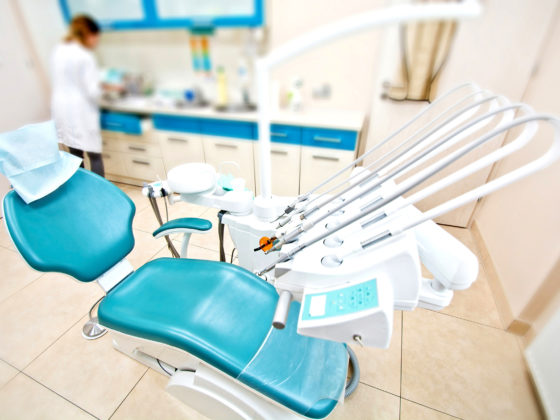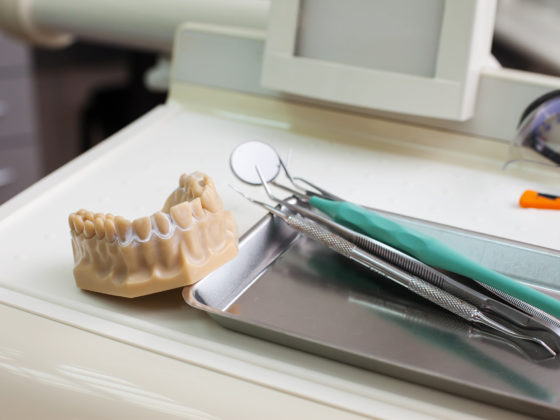
What is the Ideal Age to Take Children to the Orthodontist?
ALMONTE DENTISTS CARLETTON PLACE
Do you have small children, and have doubts about when you should take them to their first consultation with the orthodontist?
It is vitally important to take your children to the dentist from a young age, in order to avoid long or short-term problems. These can gradually become worse and trigger much bigger dental problems, if not addressed earlier in the child’s development.
Although we know that young children should visit the dentist from a very early age (2 to 3 years) as a preventive measure, today we will be talking about certain children’s need to go to a specialist in Orthodontics and Maxillofacial Orthopedics, i.e. an orthodontist.
The problems that orthodontists address and solve in young children are generally focused on dental as well as skeletal factors. Certain orthodontic defects of the teeth and jaws can have serious consequences for oral-dental health, and among these, are misaligned or crowded teeth.

Carleton Place Dentists children’s first visit to orthodontist
Orthodontist Children
ALMONTE DENTIST CARLETON PLACE
We have received questions about the ideal recommended age for parents to take their children to an orthodontist.
This age can vary depending on the child’s orthodontic situation. A common age for some kids with narrow palates to see the orthodontist for the first time is 6 or 7 years old. Around this age, these little ones naturally start to initiate tooth replacement (baby teeth begin to fall out.)
Dental issues requiring Orthodontic intervention
ALMONTE DENTIST CARLETON PLACE
Class II Problems (Maxillary Excess or Mandibular Deficiency)
CARLETON PLACE DENTISTS ALMONTE
This is usually caused by an overgrowth of the upper jaw (maxilla.) This condition can be subjective at times and lower jaw (mandible) growth should be monitored since the mandible finishes growing later than the maxilla. This can be mistaken for a temporary Class II problem, which is normal as long as the difference between the maxilla and mandible is not very significant. When the bone growth issue is caused by a maxillary overgrowth or a mandibular deficiency, we observe protruding upper teeth, with spaces. The ideal stage for these children to get assessed is when both the upper and lower permanent first molars have already erupted, as well as the upper and lower 4 incisors (at approximately 6-7 years of age).
Class III Problems (Mandibular Prognathism, Maxillary Hypoplasia or a combination of both)
CARLETON PLACE DENTISTS ALMONTE
This is a less common problem, however, the number of people affected by this condition has increased significantly in recent years. It consists of hypoplasia (poor growth) of the maxilla, which must be treated with orthodontic devices. Being able to intervene in such cases from an early age can help avoid orthognathic surgery in patients in the long term.
If the problem lies in mandibular overgrowth or mandibular prognathism, the parents should be informed if the condition can be treated with traditional orthodontics, or if the patient must undergo orthognathic surgery. It all depends on the biological variability of each child.
Openbite
CARLETON PLACE DENTISTS ALMONTE
Open bites can be of significant concern. But with an orthodontist, its correction at an early age can help eliminate some of the bad habits that are the causal factors. This condition can be caused by habits such as finger sucking or lip sucking, as well as postural problems or protraction of the tongue. They can also be caused by an alteration in the growth of the jaws.
They are corrected by targeting the cause, with the use of specialized orthodontic devices.
Gummy Smile or Vertical Maxillary Excess
ALMONTE DENTIST CARLETON PLACE
In this condition, patients often show a lot of their gums when talking or smiling, which depending on the severity, may not be desired by the patient. Generally, at an early age, this is not a factor that should be of concern, unless the exposure of the upper teeth is excessive. Currently, there are many ways to correct this, ranging from the placement of braces to orthognathic surgery.
Diastemas
ALMONTE DENTIST CARLETON PLACE
Diastemas are wide spaces between teeth (2mm or more). Generally, the most common site is between the upper teeth. It can also be seen between lower front teeth and is related to various factors, such as fibrous tongue tie, tongue habits, or a change in tooth eruption. Its correction is simple and effective, and it depends a lot on the causal factor of the problem.
Little space for permanent teeth
CARLETON PLACE DENTISTS ALMONTE
Children generally should have a smile with spaces. Not having gaps, or having a perfectly aligned dentition from a very young age can be a sign of an obvious lack of space for the eruption of the adult teeth. It is important to assess this, in order to determine future orthodontic intervention. The specialist can begin this process with a space analysis and a panoramic radiograph of the jaws.
See you next time!
Thanks for reading today. We hope you liked this article. Remember that if you have questions or suggestions you can let us know from our contact form on the home page.
Marchwood Dental Clinic specializes in implants and aesthetic treatments, focusing on the oral and dental health of patients in Carleton Place, Almonte, Carp and all of West Ottawa. We offer many treatment options and alternatives with cutting-edge technology to guarantee the quality of our service.
Contact us and schedule your appointment at Marchwood Dental Clinic serving Carleton Place, Almonte, Carp and all of West Ottawa today. Follow us on Facebook & Instagram for more information.
BEST ALMONTE DENTISTS IN CARLETON PLACE
Do you know how to choose the best Almonte dentist in Almonte? Not everyone is concerned with researching before opting for the best dental professional or clinic responsible for the health of their teeth. However, know that it is important to analyze in detail who will do your dental treatments.
Carleton Place dentists: Best dental professionals for dental braces brackets
HOW TO CHOOSE THE IDEAL DENTIST? ALMONTE: UNDERSTAND WHAT ARE THE CRITERIA TO DECIDE WITH WHICH PROFESSIONAL TO START TREATMENT


